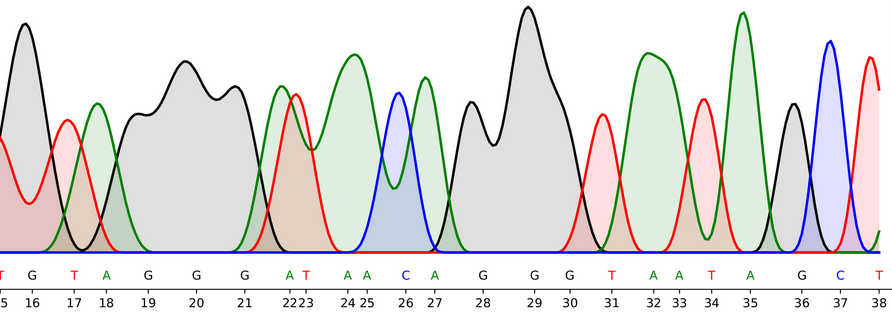
Readings
Day 1
-
The Los Alamos primer – The first lectures on how to build an atomic bomb. by Robert Serber.(1992) This famous set of lectures was delivered at Los Alamos during the Manhattan Project by Prof. Robert Serber. The goal of these lectures was to get the very bright but inexperienced young researchers up to speed on the key elements of nuclear physics they would need to build the atomic bomb.
-
Virus reconstitution and the proof of the existence of genomic RNA. by H Fraenkel-Conrat and B Singer.(1999) This retrospective by Fraenkel-Conrat and Singer reflects on the beautiful and, quite frankly, amazing experiments they did to reconstitute the tobacco mosaic virus from purified components. They found that when they mixed viral RNA and the TMV proteins, they got back rod-shaped visions that were indistinguishable from the wild-type virus and that were similarly infectious.
-
Energetic cost of building a virus. by G. Mahmoudabadi, Ron Milo, Rob Phillips.(2017) Energetic costs for viral assembly in T4 and influenza, mentioned in lecture 1.
-
Measurements of the self-assembly kinetics of individual viral capsids around their RNA genome. by Rees F. Garmanna, Aaron M. Goldfaina, and Vinothan N. Manoharan.(2019) Kinetics of MS2 bacteriophage around MS2 RNA, mentioned in lecture 1.
-
A SARS-CoV-2-Human Protein-Protein Interaction Map Reveals Drug Targets and Potential Drug-Repurposing. by Gordon et. al.(2020) Victoria shared in lecture 1.
Day 2
-
Three-dimensional Structure of HIV-1 Virus-like Particles by Electron Cryotomography. by Jordan Benjamin et. al.(2005) 3D structure of HIV, one of Rob’s all time favorite papers. Mentioned in lecture 2.
-
Mechanism of Force Generation of a Viral DNA Packaging Motor. by Yann Chemla et. al.(2005) phi 29 DNA packaging motor and measurement of forces. Mentioned in lecture 2.
-
Physical Principles in the Construction of Regular Viruses. by Caspar and Klug.(2005) Mentioned in lecture 2.
-
Chaos in the Brickyard by Bernard K. Forscher.(1963) From Ollie Stephenson. To follow up on the Poincare quote, this is a nice (and short) letter from 1963 science.sciencemag.org/content/142/3590/339.1. It likens the production of scientific facts to making bricks, and scientific explanations/laws as edifices made from these bricks. The author is saying that scientists have lost sight of the fact that they’re supposed to be building edifices and instead are just making more and more bricks, leading to chaos in the brickyard.
Day 3
-
Why Enveloped Viruses Need Cores—The Contribution of a Nucleocapsid Core to Viral Budding. by Lazaro, Mukhopadhyay, and Hagan.(2017) Hagan has thought very deeply about the free energy cost of viral assembly. This paper gives an example of the kinds of approaches he has been taking.
-
Physics of RNA and viral assembly. by R.F. Bruinsma.(2006) This paper gives a fascinating view of the physics involved in the assembly of rna viruses.
-
Energies and pressures in viruses: contribution of nonspecific electro-static interactions. by Siber, Bozic, and Podgornik.(2011) Mentioned in lecture 3.
Day 4
-
Rational evaluation of various epidemic models based on the COVID-19 data of China. by Yang et al.(2020) This interesting paper uses 17 distinct models to evaluate data on Covid-19. The importance of the work is its attempt to rigorously evaluate how well models predict the future course of epidemics as they unfold.
-
Rational evaluation of various epidemic models based on the COVID-19 data of China supplement. by Yang et al.(2020) Supplement of above paper with ODEs.
-
Epidemic analysis of COVID-19 in China by dynamical modeling. by Peng et al.(2020) Discusses SEIR-QD further.
-
Acceleration of evolutionary spread by long-range dispersal. by Oskar Hallatscheka and Daniel S. Fisher.(2014) Dispersal of evolutionary variants.
Useful links
-
Prof. Manu Prakash’s Lab Website. The Prakash lab is responding to COVID-19 by developing new PPE that can be deployed quickly to healthcare workers. Check out their website and open lab notebooks. Mentioned in lecture 1.
-
VIPERdb. VIPERdb houses structural analysis for icosahedral virus capsid structures. They have renderings online and computational analyses. Mentioned in lecture 1.
-
Nextstrain. Tracking SARS-CoV-2 genomic variations by location.
-
COVID-19 Scenarios. Modeling of COVID-19 outcomes from Neher lab. Builds mathematical model based on user-specified parameters.
-
Virus Packing Efficiency. This utility makes it possible to compute the ratio of nucleic acid volume to the available space within the viral capsid.
-
How Coronavirus Hijacks Your Cells. Jonathan Corum and Carl Zimmer’s infographic on how coronavirus infects cells.